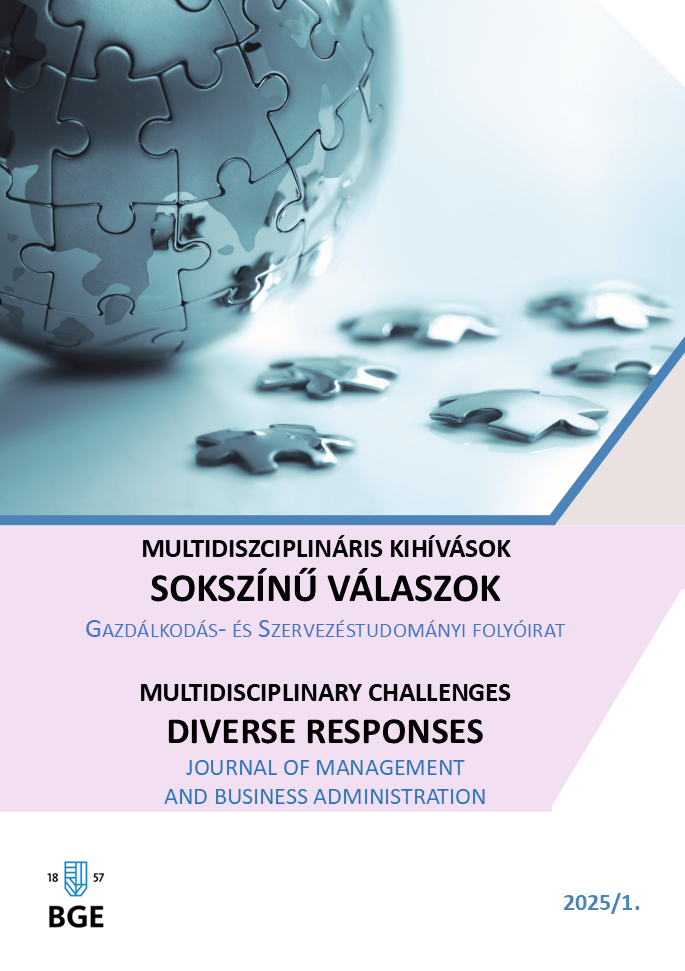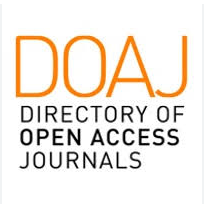Az agroökológiára való átállás meghatározói és korlátjai Algériában
A Bou Ismail község piaci kertjeinek esete (Tipaza megye)
Absztrakt
A hagyományos gazdálkodás, amely elsősorban a termelékenység maximalizálására fókuszál, súlyos negatív következményekhez vezetett a környezetre és az emberi egészségre nézve. Ezekkel a kihívásokkal szembenézve az agroökológia egy ígéretes alternatívaként jelent meg a fenntartható mezőgazdasági gyakorlatok között, melyek tiszteletben tartják az emberek egészségét és a környezetet. A tanulmány célja annak meghatározása, hogy az agroökológiai gyakorlatokat alkalmazzák-e a Bou Ismaïl község piaci kertészeti szektorában, az elfogadást befolyásoló tényezők azonosítása, valamint a fejlődést gátló korlátok meghatározása. E cél elérése érdekében 33 véletlenszerűen kiválasztott piaci kertész körében készítettünk felmérést, mely során adatokat gyűjtöttünk az egyének jellemzőiről és a termelési folyamatokban alkalmazott agroökológiai gyakorlatokról. Az összegyűjtött adatokat SPSS szoftver és egy Logit regressziós modell segítségével elemeztük. Az eredmények azt mutatják, hogy bár az agroökológiai gyakorlatokat egyre inkább alkalmazzák a vizsgált területen, az elfogadás mértéke jelentősen eltér a különböző gazdák között. Az elemzés több, a gazdaságon belüli és azon kívüli tényezőt is azonosított, amelyek az agroökológiai gyakorlatok elfogadását befolyásolják, és ezek a tényezők a konkrét gyakorlatok függvényében változnak. Ugyanakkor a tanulmány számos olyan korlátot is feltár, amelyek akadályozzák az agroökológiai módszerek szélesebb körű elfogadását. Az eredmények alapján javaslatokat fogalmazunk meg az agroökológiai gyakorlatok előmozdítására és azok elfogadási szintjének növelésére a piaci kertészek körében.
Hivatkozások
Adégbola, P. and Adékambi, S.A. (2008) Taux et déterminants de l’adoption des variétés améliorées d’igname développées par l’IITA. [Rapport d’étape]. 31pp.
Amichi, H., Jamin, J.Y., Morardet, S., Gharbi, I., Azizi, A., Faidani, F., Ghileb, M., Marlet, S. and Elloumi, M. (2016) 'Le rôle du faire valoir indirect dans le renouvellement générationnel des agriculteurs irrigants en Tunisie', Cahiers Agricultures, 25(3), pp. 1-7. https:// doi.org/10.1051/cagri/2016022.
Chanou, P. (2007) Efficacité économique de la gestion des bas-fonds rizicoles de Gogounou dans une perspective d’accroissement de leurs performances, Thèse d’ingénieur agronome, Faculté d’Agronomie, Université de Parakou, Bénin, p. 74.
Conacher, A. and Conacher, J. (1982) Organic farming in Australia. Department of Geography, University of Western Australia.
Dakin, L. (2008) Impact socio-économique des interventions du PDRT sur les femmes rurales du département de la Donga (Thèse d’ingénieur agronome, Faculté d’Agronomie, Université de Parakou, Bénin, p. 106).
Darnhofer, I., Schneeberger, W. and Freyer, B. (2005) Converting or not converting to organic farming in Austria: Farmer types and their rationale. Agriculture and Human values, 22(1), 39–52. https://doi.org/10.1007/s10460-004-7229-9
Davis, A.S., Hill, J.D., Chase, C.A., Johanns, A.M. and Liebman, M. (2012) Increasing cropping system diversity balances productivity, profitability and environmental health. https://doi.org/10.1371/journal.pone.0047149
Diogo, R.V.C., Agandan, E.M.M., Nouatin, G.S. and Djedje, M. (2017) Modes de gestion de la fertilité des sols des agro-éleveurs peuls au Nord-Ouest du Bénin: Implications pour la sécurité alimentaire. Annales de l’Université de Parakou. Sciences Naturelles et Agronomie, 1, 74–81.
Folefack, D.P., Sale, A. and Wakponou, A. (2012) Facteurs affectant l’utilisation de la fumure organique dans les exploitations agricoles en zone sahélienne du Cameroun. Afrique Science: Revue Internationale des Sciences et Technologie, 8(2), 22–33.
Gardebroek, C. (2003) Farm-specific factors affecting the choice between conventional and organic dairy farming. Tijdschrift voor Sociaal Wetenschappelijk Onderzoek van de Landbouw, 18(3), 140–148. https://doi.org/10.22004/ag.econ.24890
Genius, M., Pantzios, C. and Tzouvelekas, V. (2006) Information acquisition and adoption of organic farming practices. Journal of Agricultural and Resource Economics, 31(1), 93-113. https://doi.org/10.22004/ag.econ.10150
Hayes, T.B., Anderson, L.L., Beasley, V.R., de Solla, S.R., Iguchi, T., Ingraham, H., Kestemont, P., Kniewald, J., Kniewald, Z., Langlois, V.S., Luque, E.H., McCoy, K.A., Muñoz-de-Toro, M., Oka, T., Oliveira, C.A., Orton, F., Ruby, S., Suzawa, M., Tavera-Mendoza, L.E., Trudeau, V.L., Victor-Costa, A.B. and Willingham, E. (2011) Demasculinization and feminization of male gonads by atrazine: Consistent effects across vertebrate classes. The Journal of Steroid Biochemistry and Molecular Biology, 127(1), 64-73. https://doi.org/10.1016/j.jsbmb.2011.03.015
Issoufou, O.H., Boubacar, S., Adam, T. and Yamba, B. (2017) Determinants of adoption and impact of improved varieties on millet productivity in Niger. African Crop Science Journal, 25(2), 207-220. https://doi.org/10.4314/acsj.v25i2.6
Kerselaers, E., De Cock, L., Lauwers, L. and Van Huylenbroeck, G. (2007) Modelling farm-level economic potential for conversion to organic farming. Agricultural Systems, 94(3), 671-682. https://doi.org/10.1016/j.agsy.2007.01.002
Läpple, D. (2010) Adoption and abandonment of organic farming: An empirical investigation of the Irish drystock sector. Journal of Agricultural Economics, 61(3), 697-714. https://doi.org/10.1111/j.1477-9552.2010.00257.x
Latruffe, L. and Nauges, C. (2010) 'Conversion to Organic Agriculture in France: Is there a Selection Problem', presented at the 120th seminar of the European Association of Agricultural Economists (EAAE), Chania, Crete, Greece, 2-3 September.
Lohr, L. and Salomonsson, L. (2000) 'Conversion subsidies for organic production: Results from Sweden and lessons for the United States', Agricultural Economics, 22(2), pp. 133-146. https://doi.org/10.1016/S0169-5150(99)00044-1
McBride, W. and Greene, C. (2009) 'The profitability of organic soybean production', Renewable Agriculture and Food Systems, 24, pp. 276-284. https://doi.org/10.1017/S174217050999005X
McBride, W.D. and Daberkow, S.G. (2003) 'Information and the Adoption of Precision Farming Technologies', Journal of Agribusiness, 21(1), pp. 21-38. doi: http://dx.doi.org/10.22004/ag.econ.14671.
Ouédraogo, R. (2003) Adoption et intensité d’utilisation de la culture attelée, des engrais et des semences améliorées dans le centre nord du Burkina. CEDRES, Université de Ouagadougou, Burkina Faso, p. 107.
Padel, S. (2001) 'Conversion to organic farming: A typical example of the diffusion of an innovation?', Sociologia Ruralis, 41(1), pp. 40-61. https://doi.org/10.1111/1467-9523.00169
PDAU. (2008). Plan directeur d’aménagement et d’urbanisme de la commune de Bou Ismail (Révision)
Pietola, K. and Oude Lansink, A. (2001) 'Farmer response to policies promoting organic farming technologies in Finland', European Review of Agricultural Economics, 28(1), pp. 1–15. https://doi.org/10.1093/erae/28.1.1
Roussy, C., Ridier, A. and Chaib, K. (2015) 'Adoption d’innovations par les agriculteurs: Rôle des perceptions et des préférences', Working Paper SMART-LERECO N°15-03. Available at: https://ageconsearch.umn.edu/bitstream/206036/2/WP15-03.pdf
Sall, S., Norman, D. and Featherstone, A. (2000) 'Quantitative assessment of improved rice variety adoption: The farmer’s perspective', Agricultural Systems, 66, pp. 129–144.
Sauer, J. and Park, T. (2009) 'Organic farming in Scandinavia – productivity and market exit', Ecological Economics, 68(8-9), pp. 2243–2254.https://doi.org/10.1016/j.ecolecon.2009.02.011
Shelton, J.F., Geraghty, E.M., Tancredi, D.J., Delwiche, R.J., Schmidt, B., Ritz, B., Hanson, R. and Hertz-Picciotto, I. (2014) 'Neurodevelopmental disorders and prenatal residential proximity to agricultural pesticides: The CHARGE study', Environmental Health Perspectives, 122(10), pp. 1103–1109. https://doi.org/10.1289/ehp.1307044
Willer, H., Trávníček, J., Meier, C. and Schlatter, B. (eds) (2022) The world of organic agriculture: Statistics and emerging trends 2022. Research Institute of Organic Agriculture (FiBL) & IFOAM – Organics International. Available at: http://www.organic-world.net/yearbook/yearbook-2022.html
Yabi, A.J., Bachabi, X.F., Labiyi, A.I., Ode, A.C. and Ayena, L.R. (2016) 'Déterminants socioéconomiques de l’adoption des pratiques culturales de gestion de la fertilité des sols utilisées dans la commune de Ouaké au Nord-Ouest du Bénin', International Journal of Biological and Chemical Sciences, 10(2), pp. 779–79. https://doi.org/10.4314/ijbcs.v10i2.27.
Zégeyé, T., Tadesse, B. and Tesfaye, S. (2001) 'Determinants of adoption of improved maize technologies in major maize growing regions of Ethiopia', in Second National Maize Workshop of Ethiopia. Ethiopia, pp. 12–16.


























